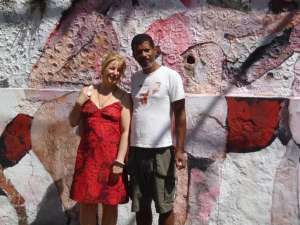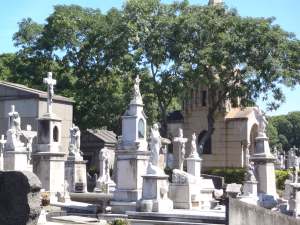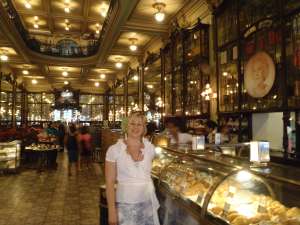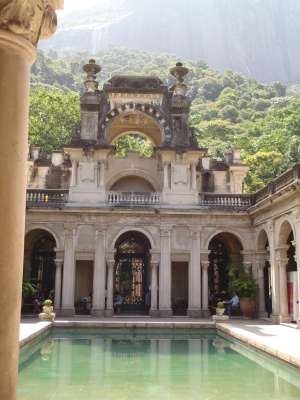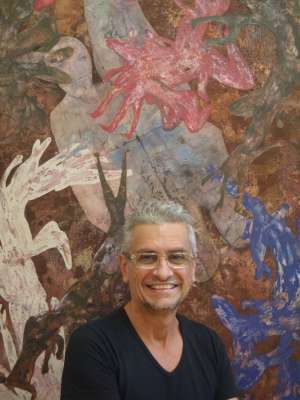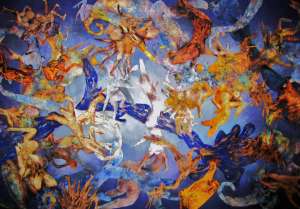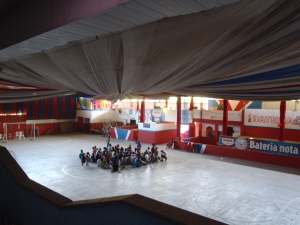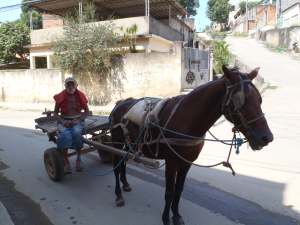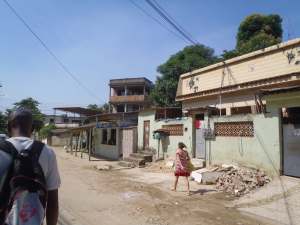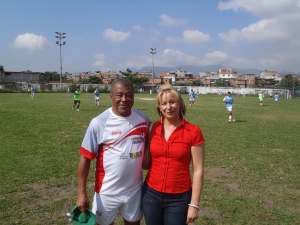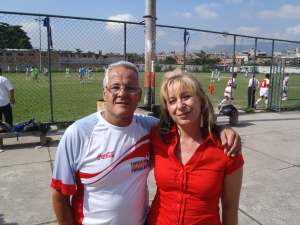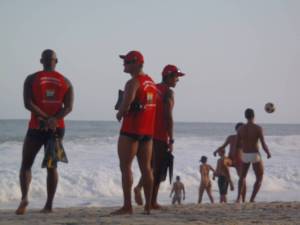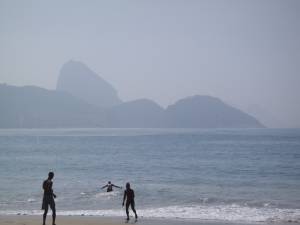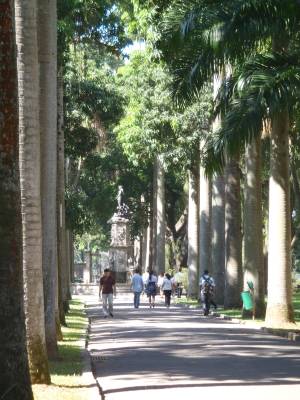
Centre For Local Research into Public Space (CELOS)
Kristen Fahrig In Rio de Janeiro
In August 2010 while visiting friends in Rio de Janeiro, Brazil I had a number of conversations with Henrique Pio, a local writer and cultural producer. We shared ideas around the importance of the arts in promoting healthy communities and in due course we had developed a concept for a community art project for the favelas in Rio.
With assistance from the touring office of the Ontario Arts Council (International Residencies), I am returning to Rio de Janeiro to help develop the supports necessary for the establishment of a community arts projects in the city’s the under-served neighbourhoods.
In these ‘on the road’ reports I will be:
*Observing ‘how things get done’ in the favela, keeping in mind economist Elenor Ostrom’s theories on governance of the commons
- Interviewing local artists to see what they’re up to, what are their motivations, what are they making
- Recording the process of beginning community art projects from the ground up
March 28, 2011
Kristen Fahrig
www.kristenfahrig.com
Bios – Henrique Pio & Kristen Fahrig
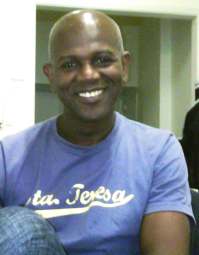
Henrique Pio is a Writer, Educator and Cultural Producer living in Rio de Janeiro, Brazil. Between 1988 and 2007 he lived in Europe where he worked as a writer for advertising agencies in Portugal and London, England and produced musical events and cultural festivals. The Cosmopolitan Festival (a Brazilian-oriented festival in London, whose five editions focused on individual artistic themes) in particular garnered critical acclaim.
Upon his return to Brazil, Henrique became committed to social transformation through engagement in the arts. In his role as professor of Creative Advertising in the Social Communication program at Estacio de Sa University, he involves his students in promoting international projects such as the ‘Peace One Day’ initiative through music, lectures and exhibits about the peaceful coexistence between different communities. He works as a freelance Creative Director for advertising agencies in Rio de Janeiro and London, and volunteers his expertise by producing commercials for the Brazilian NGO ‘Viva Ro’.
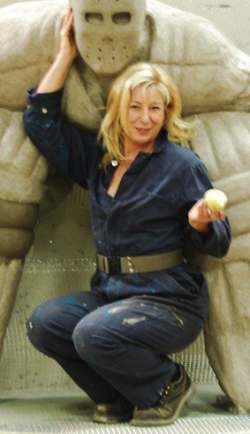
Kristen Fahrig is a Community Artist, Cultural Animator and Sculptor living in Toronto, Canada. Her focus in the past ten years has been on community collaborations in Toronto’s west end, Harbourfront Centre and MacGregor Park, where she is currently artist-in-residence. In this process she brings together professional artists of a variety of genres to work with people of all ages and backgrounds, to create collective works of art, both performances and installations.
Kristen has received two Best Practices Awards from Community Arts Ontario for Equity & Diversity Achievment for initiating and producing the Urban Infusion Project (2003) and the Neighbourhood Legacy Project (2004). In 2010 she was honoured with the Lynch Staunton Award from the Canada Council for the Arts in the field of Integrated Arts and Community Collaboration.
Kristen’s residency in Rio de Janeiro for Phase One of this project has been supported by the Ontario Arts Council, International Residencies Program, and the Canada Council for the Arts (Travel Grant).
Project Description
Crescer com Arte (Growing Up with Art) Phase One, April, May 2011 – Rio de Janeiro, Brazil
Artist Kristen Fahrig will work with Cultural Producer Henrique Pio to develop the supports necessary for the establishment of community art projects in local urban neighbourhoods.
In 2014 Rio will host the World Soccer Cup and in 2016 the Summer Olympics and the pressure to make an impression on the international stage is high. The city has completed the ‘pacification’ of 10 favelas and real estate speculation has begun in these areas that have been ‘cleaned up’.
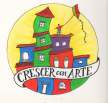
Preparations for Rio project
Our original name for the project was ‘Arte para Todos’ or ‘Art for All’.
With a little research we discovered that this name is over-used so we changed the name to ‘Crescer com Arte’ or ‘Growing Up with Art’. I designed and painted a little logo for the project and sent it to Rio where it is being re-worked.
Henrique has identified the favela Complexo do Alemao as a good place to start. Formerly extremely dangerous because of the drug business, it went through a massive ‘pacification’ in December with police and Special Forces removing the dealers.
Now that carnival is over Henrique has been making progress in setting up appointments with a couple of NGOs that are working with similar themes of culture and sport. As well he is connecting us with the university graduate course in Cultural Production to find trainees who could work with us.
April 6, 2011
Artists in Santa Teresa

Kristen With Daniel Silva
Santa Teresa was once known for being a 'dodgy' neighborhood but over the past ten years this reputation has completely turned around largely because of all the visual artists that have made their home here. More than 80 artists show their work in Santa's annual studio tour in September 'Arte de Portas Abertas'. And at other times of the year art is everywhere to be seen in the streets.
The first artist that we meet is Daniel Silva a 'self made man' who was born and grew up in the favela Arara which is close to Mangueira, made famous for it's schools of Samba. Daniel, a fashion designer, is known for the exotic way in which he presents himself. He expresses himself through his dress and loves to wear long black coats even in 40 degree weather.
Proud of his community, he always has a positive take on life.
At the Bar do Minero we see puppets created by puppet master Marco Nogueira on permanent display and across the street is a painting by Arjan Martins, an artist from Santa. Arjan had a show of his work in Senegal last year. He promises to invite us to his studio where we can take a look at more of his paintings and talk about life as an artist in Rio de Janeiro.
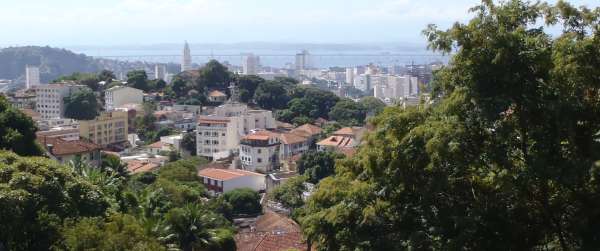
View from a window in Santa Teresa looking out over the city of Rio de Janeiro
April 17, 2010
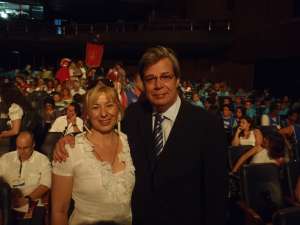
President of Instituto Cultural Cidade Viva
Fernando Portella and Instituto Cultural Cidade Viva
As we work on refining the concept of 'Crescer com Arte' we are visiting with community leaders and people in the cultural sector in Rio de Janeiro.
One person with many years of experience in designing and producing sociocultural projects is Fernando Portella, president of the Instituto Cultural Cidade Viva and director of the company Engenharia Cultural. Large Corporate clients hire the Instituto Cultural Cidade Viva to realize social and cultural projects to the benefit of the community. Examples of past projects are the improvement of the library system in small cities and an inventory of small coffee farms, documenting rural architecture and the history of coffee production towards cultural tourism in rural areas.
In our meeting with Fernando in the outdoor patio conference room of the well-appointed offices of Cidade Viva, he told us about a large project that he is developing for the recently pacified favela Complexo do Alemao. He is interested in having 'Crescer com Arte' involved in it.
He then invited us to the 2nd Edition of the Rio Socio Cultural Prize held at the Joao Caetano Theatre in downtown Rio. This is one of the most important prizes in recognition of sociocultural actions. One of the effects of the prize is to consolidate the identity of the 'povo fluminense' (people of the state of Rio de Janeiro). Conceived and produced by Instituto Cultural and Riosolidario with the support of the Secretary of Culture of Rio de Janeiro and Corporate sponsors and in the two years of it's existence it has involved a total of 438 actions representing 80 municipalities.
On April 14 at Joao Caetano theatre we saw short films about the top ten projects. A jury chose five to be recognized with a prize of $10,000. reais each.
Samba Schools
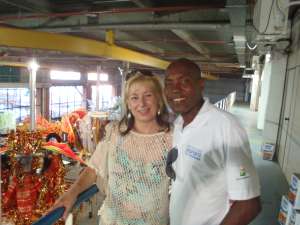
Kristen and Avelino at Cidade do Samba
Avelino Ribeiro and a Visit to Cidade do Samba
Avelino Ribeiro is a Publicist in his day job, but like many people in Rio de Janeiro he also has a second life in one of the Escolas do Samba. A brilliant dancer, in 2001 he won first place in the Estandarte de Ouro for Grande Rio, the most coveted prize of all the dancers.
Avelino takes us for a visit to see the Cidade do Samba (Samba City), the place where for eight months of the year, armies of people build the huge floats and costumes that elaborate the themes for each of the samba schools. Samba has its roots in the drumming and chanting of the African peoples, so it is fitting that Cidade do Samba is located in the Gamboa district, the location of the slave trade markets in it's latter years.
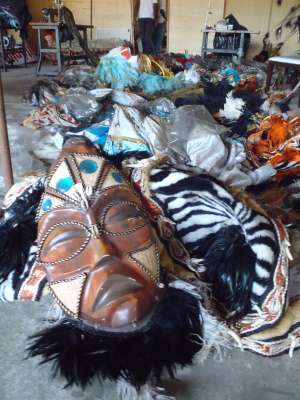
Costumes salvaged from the fire at Grande Rio
With weeks to go before the parade this year, tragedy struck the Grande Rio School. A fire that started in a coffee machine at one end of a huge warehouse travelled in the empty spaces between the floors. When it got to the end where the Grande Rio workshops and offices were, it had no place to go and the entire year's work went up in flames. But the biggest loss was of the archives, 40 years of photos and memorabilia that told the history of the creativity of the school. With a huge effort new floats were created in the remaining weeks and Grande Rio (as well as the two other schools affected by the fire) took part in the parade in the Sambadrome, but they could not be part of the competition.
Avelino showed us around the space that Grande Rio has moved into and then we went for a tour of the huge complex where only the top schools have places allotted to them. Samba has come a long way in recent years. It is hard to imagine that it was once outlawed. Now it has become such a huge money generator that the schools hold a lot of power and can even charge people for places in the performance. The most glamourous role is 'Rainha da Bateria' (Queen of the Drummers) and starlets will pay $400,000.00 R for this opportunity that brings months of pre-carnival TV exposure. The only school that reserves this role for a someone from the community is Beja Flor. Interesting that this school wins first place almost every year!
Gol de Letra
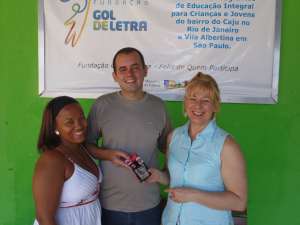
Felipe Pitaro and Chrislaine de Lima at Gol de Letra
We pay a visit to Felipe Pitaro at the Gol de Letra Foundation offices in a compound just outside the border of the Caju Favela.
The Gol de Letra Foundation was begun by the famous Brazilian soccer players Rai and Leonardo and works in the suburbs of Sao Paulo and Rio de Janeiro, approaching social problems through Art, Culture, Education and Sport. The focus at the Caju location has been on literacy, and they have a library from which people can borrow books or study in.
Felipe tells us that because of it's connection to the soccer players, many people identify the organization only with sports. They are very interested in the Arts and Culture as agents of social change. It was during a visit to the Gol de Letra office that we were introduced to Ivan, an artist from the favela Caju who was so excited about the possibility of bringing the 'Crescer com Arte' project to his community. He even has a location in mind that he wanted to show us. We also meet Cristiane Lemos working there. She is from the community and plans on running for city councillor so that 'I can bring some good things to my Caju'.
Community Art in Brazil
Yes, there is a history in Brazil of using art to bring about social change. Augusto Boal originated his 'Theatre of the Oppressed' here for example. And as for art in communities, the Samba Schools were originally expressions of the soul and creativity of the people.
There is however currently no concept of Community Art as it has evolved in North America over the past twenty years - where an artist leads community members not only in collective artistic production, but also in a process that strengthens connections within the community, develops self awareness and enables participants to articulate and achieve social and economic betterment.
This is the description that we have come up with to help explain our process with 'Crescer com Arte':
A arte comunitária é uma recente modalidade de arte. Historicamente, em muitas culturas artistas manifestaram suas criatividades em nível comunitário. É um processo onde renomados artistas profissionais atuam junto com as pessoas de uma comunidade. O trabalho desenvolvido desperta os participantes a encontrarem novos caminhos para dar voz as suas experiências individuais e coletivas.
O papel do artista líder é o de apoiar e conduzir os membros da comunidade não apenas na produção artística coletiva mas também, simultaneamente, no processo de fortalecimento dos laços dentro da comunidade. Desenvolver a auto consciência permite os participantes a melhor se articularem e a realizar melhoria social e econômica.
O projeto "Crescer com Arte" traz um outro elemento para o processo de arte comunitária, com a de artistas internacionais e a formação de alianças com as comunidades de outros países.
A Visit to Caju Favela
Ivan, a well known artist living in Caju Favela, would like us to bring a project to his neighborhood. He has offered to show us around and to take a look at the location he has in mind. We make our way to Pasarela Número 3, a walking bridge over the highway Avenida Brasil where he meets us to escort us into the favela.
Caju is a huge favela made up of eight different communities each with their own separate leadership and two of which are in conflict with the others. These communities are arranged around the Cemiterio Sao Francisco Xavier, an enormous cemetery, one of the oldest in Brazil and some of the houses actually have windows that open directly into the cemetery, a situation seen as a terrible thing in Brazilian culture.
An Afternoon with Rio Artist Claudio Montagna
Recently I spent an afternoon with the artist Claudio Montagna in his studio next-door to the beautiful Confeitaria Colombo in the Central district of Rio de Janeiro. Claudio studied for 10 years at Parque Lage in the Escola de Artes Visuaise. This beautiful structure was built by a rich businessman as a performance space for his wife the opera singer Bezanzone Lage. Now it is used as an atmospheric location for music videos (Snoop Dog) and film shoots, as well as for the art school).
Claudio shows me some of his works in progress, large canvasses that combine collage with painting to create elaborate worlds of floating figures. Beginning with bodies from erotic magazines, these figures grow in and out of each other reminiscent of Hieronymus Bosch and his Garden of Earthly Delights. Claudio is also inspired by Leonardo's frescos as he layers paint to transform these normal human bodies into something rich and transcendental.
Claudio has four pieces of his work in the Museo de Arte Moderna, part of the Gilberto Chateaubriand collection. Right now he is preparing for a major solo show at the Centro Cultural da Justica Federal and wanted me to go with him to take a look at the space. One of Claudio's many jobs is a tour guide in the city, and as we walked along the central boulevard I benefited from his wealth of knowledge of the history of Rio as well as the history of art. The thing that Claudio loves most about his city is all the different atmospheres created with the juxtaposition of architectural styles. Rio has the largest collection of cast iron sculptures outside of Paris, France. We pass colonial buildings with elaborate grille work on balconies and entranceways, next to hyper clean lines of Art Deco from early last century.
The Central Cultural da Justica Federal is one such a beautiful location, with an elaborate Art Nouveau stained glass window depicting Justice holding a balance standing behind an elegant curved staircase leading up to the second floor. Claudio will have all five rooms for his show 'Vida Liquida', a total of 300 square meters.
The title refers to 'Liquid Life', a book by Polish sociologist Sigmunt Bauman who talks about the contemporary fear of becoming nobody, a loss of individuality in a sea of humanity. A play on words 'indivisibility' and 'individuality', being just one more anonymous person in the middle of everybody else. As Claudio points out, there are no heads on his figures. Starting with bodies that are highly manipulated and perfected, he goes towards anti-photoshop, less perfection and in the direction of plasticity, fresco and paint.
As much as Claudio loves to talk about art he also believes that art should not be over explained. 'It is just feelings as they cross my mind and it is only after I finish that I think about what it is about. When I'm in the middle of it I'm not thinking at all.'
Claudio Montagna
'Vida Liquida'
Centro Cultural da Justica Federal
Cinelandia, Rio de Janeiro
August 17 - September 20, 2011
www.claudiomontagna.com.br
Visit to Belford Roxo
We take a train from the main station of Rio de Janeiro, Centro do Brasil, heading out to the outskirts of the city where we have been invited to speak to a community in Belford Roxo. The suburbs are the very poor neighbourhoods of Rio de Janeiro and these ghettos go on and on for miles. It takes one full hour of travel by train across the Baixada Fluminense (Plains of the State of Rio de Janeiro) before we arrive at our destination.
Jairzinho and Projeto Talentos
A chance meeting and we have discovered a fantastic opportunity for a collaboration! Jair Ventura grew up with Henrique's cousins in General Severiano street in a neighborhood of Botafogo (At that time Botafogo was also the name of a Big Club where Jairzinho started to play football and become famous). He had an incredible talent for football and became affectionately known as 'Jairzinho' by the people when he played for the Brazilian Team, the most famous teams of all time in the 1970s winning the World Cup 3 times.
Jairzinho went on to coach national teams around the world but now he has returned to his roots in Rio de Janeiro to lead Projeto Talentos, a program with 450 youth in the favela Manguinhos. When Henrique met him by chance at the launch of a new sports magazine, he invited us out to meet the people he has working with him on a soccer field just inside the border of the favela.
We finally found a taxi driver who agreed to take us out the highway Leopoldo Bulhões, more commonly known as Faixa de Gaza (the Gaza Strip), which passes through four warring ghettos. We were dropped off at the edge of the highway where we waited for Jorge Eiras, a Professor of Athletics at the Estadual University of Rio de Janeiro (UERJ) , who walked us into Manguinhos to the soccer field where the teams of youth were going through their exercises.
Public Parks in Rio de Janeiro
I just love public parks in urban settings. To my mind they are at the top of the list of things that make a city healthy, livable and fun! So whenever I have had a chance I explore the parks and gardens in Rio de Janeiro.
Of course the most famous public spaces here are the gorgeous and immaculate beaches, accessible to everyone, and well taken care of by the city. While waiting for my Portuguese class I often sit at the Copacabana beach sipping a cool agua di coco, practicing my verbs and watching the city crews systematically raking up any debris from the sand. On Sunday at Ipanema beach the surf is up and the life guards are out in full force, and helicopter patrols swoop by to pick up anyone who might have been forced out to sea.
The public parks have recently been refurbished by the last mayor. But they are often hidden behind tall iron fences and not readily accessible to the people. Things have improved lately but the middle class still lives behind gated apartments and streets, in an 'indoor culture' that comes from a history of violence and fear. Public parks are avoided in favor of the casa da festa, indoor party rooms.
My favorite innovation in the Rio public parks though, is the Academia da Terceira Idade (Third Age Academy). Exercise equipment for the elderly, designed with a beautiful simplicity, has been installed in parks and squares all around the downtown. These are always busy, lively hubs of activity!!



 Show search options
Show search options






 You are on the [cover page] of folder [Kristen Fahrig In Rio De Janeiro]
You are on the [cover page] of folder [Kristen Fahrig In Rio De Janeiro]